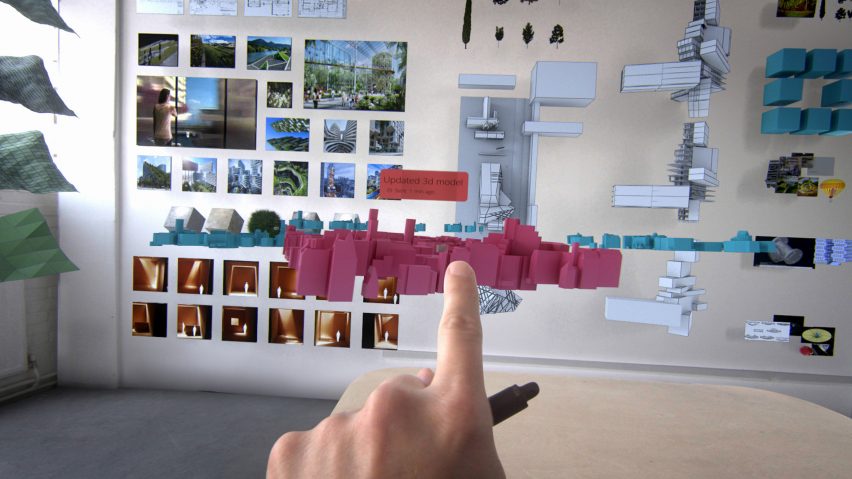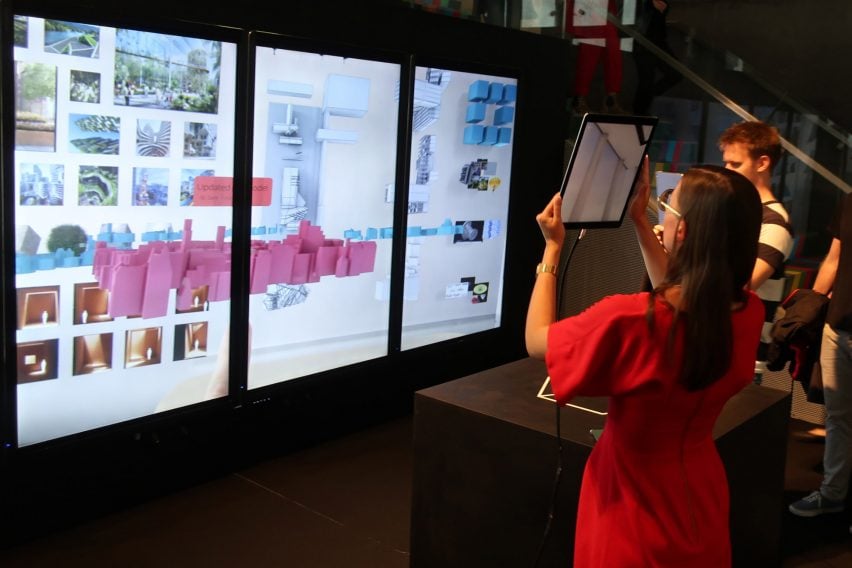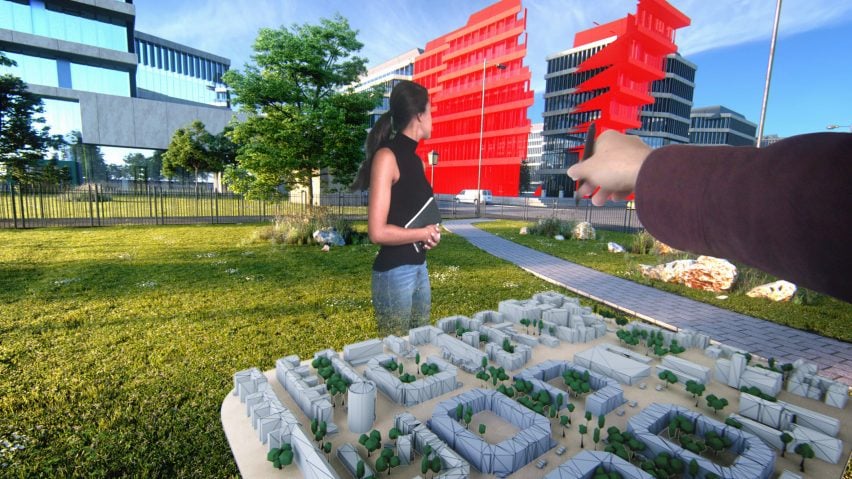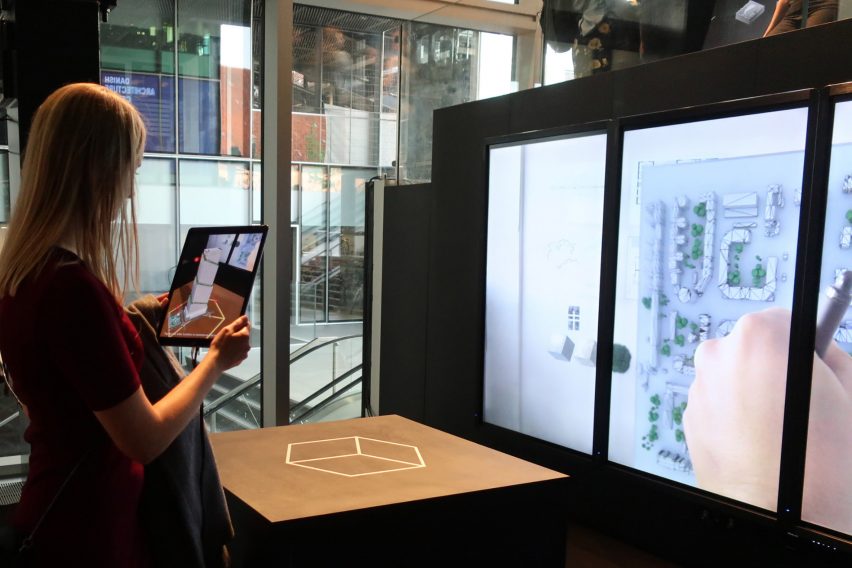Squint/Opera, BIG and UNStudio create virtual-reality collaborative design tool
Creative digital studio Squint/Opera has worked with BIG and UNStudio to create Hyperform, a tool that allows architects and planners to collaborate in virtual reality.
Described by BIG founder Bjarke Ingels as the "augmented creative collaborative environment of the future", the tool can be used to see, share and navigate digital models of projects.
Hyperform, which the studios have been developing for two years, is a virtual desktop that can be accessed from computers, tablets, smartphones, or using a virtual-reality headset.

As well as looking at models in neutral space, Hyperform can be used to digitally view models of buildings within the environments that they are being designed for.
The tool uses geolocation data to create a virtual model of a building and the landscape surrounding it, to allow architects to see how the building will relate to its environment.
Jan Bunge, managing director at Squint/Opera, describes this space as a "test environment".

"We usually discuss a 3D setting on a 2D interface. You can never feel the space. Sometimes you can build 1:1 mock ups of certain elements of a building, or an interior space, but this lets you experience in places in 3D," Bunge told Dezeen.
"Hyperform marks the first time we can feel and sense a spatial condition before it gets built," he continued.
"This will completely change the way we design, review and communicate projects in the built environment. Unlike most tools, Hyperform is a tool developed from the industry for the industry."

All of the models are contained in the cloud, meaning that architects working all around the world can access and work on a project.
The studios believe that the tool will allow for increased understanding and collaboration. Seeing the building in a virtual version of its future environment will also allow architects to better suit their projects for a site.
"It will allow us to create more relevant, purposeful designs that are more user-centric, where form follows effect," said Ben van Berkel, founder of UNStudio.
"From material choices to massing designs, we can make more informed designs together, and witness the direct consequences of those decisions. As all spaces are digital, VR allows for a more efficient, sustainable and portable workflow."
"In the future every physical object will be connected to one another, sensing each other and everything in between. For every physical object there will be a digital twin. For every physical space a virtual space," added Ingels.
"Hyperform is the augmented creative collaborative environment of the future which will allow an instantaneous confluence of actual and imagined realities – the present and the future fusing in our augmented sense of reality."

The tool is currently a working prototype. The studios have not they determined how they will make it available and whether it will free, paid for or available using a freemium model – where basic functions are free to use and more advanced ones are charged for.
Architects and designers are already using virtual reality both to design projects and as ways of experiencing them.
The Bartlett School of Architecture recently created a virtual reality preview of Amateur Architecture Studio's Lin'an History Museum in China, while Antony Gormley created an experience that allows users to walk on a digital version of the moon.